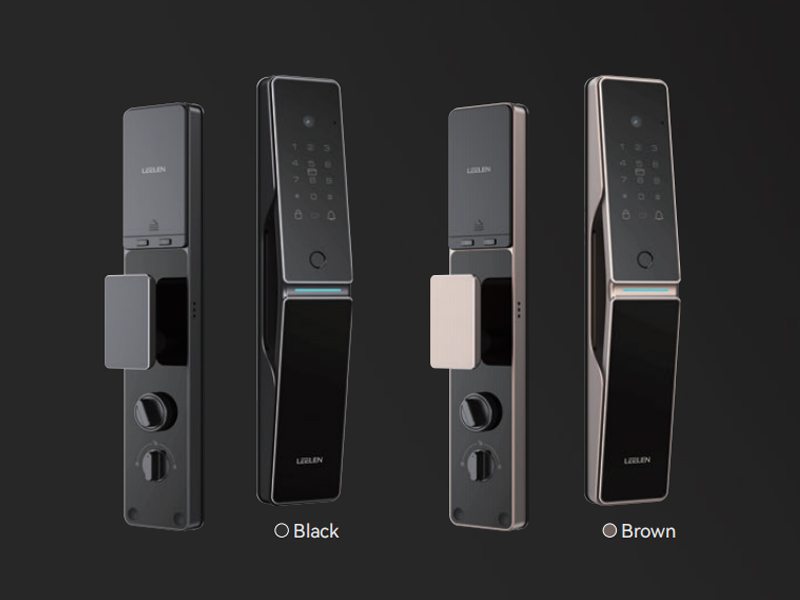Hat Is a Home Smart Lock?
he global smart lock market is booming, driven by the increasing adoption of smart homes and home automation systems. As households integrate more smart technologies, the demand for keyless entry solutions like smart locks continues to grow. With biometric authentication, IoT connectivity, and seamless integration with Wi-Fi networks, smart locks are becoming an essential element of modern home security systems. Experts predict this trend will push the market to a valuation of USD 22.06 billion by 2033, reflecting a compound annual growth rate (CAGR) of 16-19.6% from 2023 to 2033.
The Driving Forces Behind Market Growth
1.Increased Adoption of Smart Home Platforms:
Urban households are at the forefront of adopting smart locks as part of broader smart home ecosystems. Devices like smart thermostats, lighting systems, and security cameras work harmoniously with smart locks, providing seamless control via smartphones, tablets, and other gadgets. The ability to manage various home systems with a single app makes these solutions highly attractive to homeowners.
2.Consumer Preference for Keyless and Biometric Solutions:
Traditional keys are being replaced by PIN codes, biometric fingerprint readers, and mobile app access. These keyless entry systems not only offer greater convenience but also reduce the risk of unauthorized access. With Bluetooth and Wi-Fi-enabled smart locks gaining popularity, consumers benefit from remote control capabilities, such as locking and unlocking doors from anywhere.
3.The Rise of Voice-Controlled Smart Devices:
Integration with Amazon Alexa, Google Assistant, and Apple HomeKit has become a critical feature for smart locks. Homeowners now expect these devices to work with their existing virtual assistants, allowing voice commands to manage locks and receive real-time notifications. This cross-compatibility provides a seamless experience, making smart locks more appealing to tech-savvy consumers.
4.Government Initiatives and Enhanced Security Needs:
Government programs promoting energy efficiency and improved home security further drive the smart lock market. As security threats become more sophisticated, individuals increasingly seek advanced solutions that offer convenience and protection, including access logs, tamper alarms, and geofencing capabilities.
Key Features Homeowners Look for in Smart Locks
Smart locks come with a wide array of features to enhance convenience, security, and ease of use:
· Remote Locking/Unlocking: Lock and unlock doors from anywhere using a mobile app.
· Access Logs: Monitor who enters and exits the home and when.
· Shareable Electronic Keys: Provide temporary or permanent access to family and friends.
· Geofencing: Automatically lock or unlock the door when the user is near the house.
· Smartphone Alerts: Receive notifications when someone opens the door.
· Tamper Alarms: Alert users if someone tries to force entry.
· Third-Party Integration: Seamless operation with security systems, lighting controls, and other smart devices.
As Misha Kollontai, a test engineer for Consumer Reports, explains: “Smart locks can add an invaluable level of peace of mind. Depending on the model, you can view the status of your lock from anywhere and track who opens your door and when.”
Trends Shaping the U.S. Smart Lock Market
In the United States, Bluetooth- and Wi-Fi-enabled smart locks are gaining significant traction. These devices provide key advantages, such as:
· Lower costs compared to more complex systems.
· Improved battery life, reducing the need for frequent replacements.
· Better integration with smart home systems, offering a more cohesive user experience.
· Remote access capabilities, allowing homeowners to control locks even when they’re away.
Smart Locks in Residential Applications: A Growing Segment
The residential sector is expected to dominate the smart lock market. With increasing concerns about home security, homeowners are turning to advanced smart locks for protection and convenience. This segment is set to expand significantly as consumers prioritize ease of use and features like remote access, biometric authentication, and integration with smart home assistants.
Brands such as August Homes and Kwikset lead the market by offering reliable and versatile smart locks, while innovative products like Knocki capture consumer interest with unique features. These companies are meeting the growing demand for smarter, more intuitive home security solutions.
What to Consider Before Buying a Smart Lock
When choosing a smart lock, it’s important to evaluate how well it integrates with your existing smart home setup. Here are key considerations:
1. Compatibility: Ensure the smart lock works with your preferred platform—whether that’s Amazon Alexa, Google Assistant, or Apple HomeKit.
2. Automation: Look for locks that support automated routines, such as locking the door at bedtime or unlocking when you arrive home.
3. Battery Life: Wi-Fi locks offer more features but may need frequent battery replacements compared to Bluetooth models.
4. Security Features: Make sure the lock offers tamper alerts, encryption protocols, and multi-factor authentication to keep your home secure.
Conclusion: A Bright Future for Smart Locks
As urban households increasingly adopt smart home technologies, the smart lock market is set to experience unprecedented growth. These locks are no longer just a luxury but a necessity for modern homeowners seeking both convenience and enhanced security. With government support for smarter, energy-efficient homes and a growing array of innovative products on the market, smart locks will become a standard feature in homes worldwide.
Whether you’re looking to boost security, enhance convenience, or integrate with your smart home setup, smart locks are the future of home access management. As the market surges toward USD 22.06 billion by 2033, now is the time for homeowners to embrace the next generation of smart home technology.


